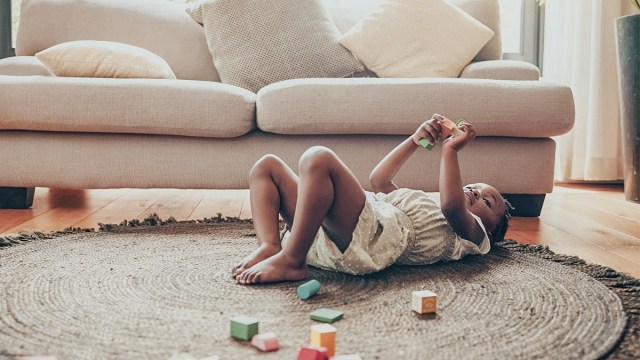As the parent of a rambunctious toddler, I lived for naptime—I desperately needed those little breaks and my tantrum-prone daughter required twice-daily reboots. When she stopped napping entirely, I nearly cried. But as much as parents relish opportunities to recharge, children need them even more, says Dr. Lena van der List, a pediatrician at UC Davis Children’s Hospital in Sacramento. “Sleep is crucial for all of us—the importance can’t be overstated—but especially for little ones,” she explains. “They are developing skills like emotional regulation and growing so much. Even things like immune function are integrally tied to sleep.” Before nixing naptime, van der List advises that parents carefully consider their child’s age, overall sleep, and signs that they may be ready.
How much sleep do toddlers need?
Toddlers need between 10 and 14 hours of sleep in a 24-hour period, says van der List, made up of a combination of nighttime sleep and naps. Typically, they’ll drop from two naps a day to one longer mid-day nap between the ages of 12 and 16 months.
While my daughter only made it to age 3 (why though), most kids need at least one nap a day until 4 years of age (or older). Others may need naps after a lot of activity (think swimming lessons or a day at Disneyland). “It’s important to know your child and some of the cues that may indicate that they no longer need [naps],” she adds.
Signs your kid is ready to stop napping
Your child may no longer need to nap if they are:
- Refusing to go to bed at their usual bedtime
- Spending naptime talking or singing to themselves
- Waking up extremely early in the morning
- Not getting enough sleep overall
The key here is consistency, says van der List. “It’s not going to be a one-day thing. You should notice a consistent pattern.”
Keep in mind that during times of illness or transition, children may struggle to nap—but it doesn’t mean naptime should end. “A lot of times parents will just kind of give up if it’s been a rough week. We tend to think that all hope is lost, but it is not. You can get back to where you were.”
Signs they still need to nap
Most adults flop onto the couch when they’re tired, but young children do the opposite. “Their little brains start to misfire,” says van der List. “They start acting out and having big behavioral issues or meltdowns.” If this sounds like your kid, they may still need to nap. Another important sign is if your kiddo isn’t getting the recommended hours of sleep in a day.
With quiet time, naps may return. It can also be helpful to create strong associations between sleep and objects, like a sleep sack, lovey, or crib. For this reason, van der List recommends children stay in a crib for as long as possible.
How to transition from nap time to quiet time
If you suspect it’s time to cancel naptime, van der List suggests transitioning to ‘quiet time.’ Young children benefit from resting in a low-stimulation environment and, if it turns out that they still need the nap, it gives them the chance to sleep.
Kids thrive on routine, so it’s important to create a new routine for quiet time, says van der List.
She recommends a darkened room with low-stimulation toys and avoiding screentime beforehand. “Watching a show as a wind down is not necessarily the best thing for toddlers or preschoolers because screen time really activates them,” she says.
When to consult your pediatrician
If you’re struggling to get your child enough sleep each day—with or without napping—have a chat with their pediatrician. And keep in mind that kids who are neurodivergent sleep differently and health issues like anemia and obstructive sleep apnea can create sleep problems, says van der List.
But sometimes, no matter how closely parents follow her advice, their children still don’t sleep.
“That’s not a parenting flaw, by any means,” she says. “There are just some kids that don’t sleep as well.”











